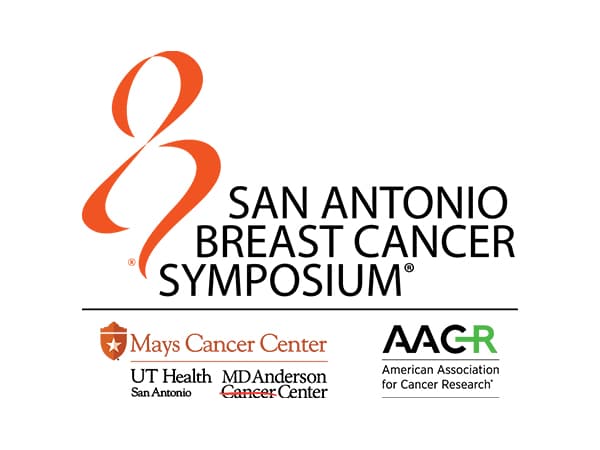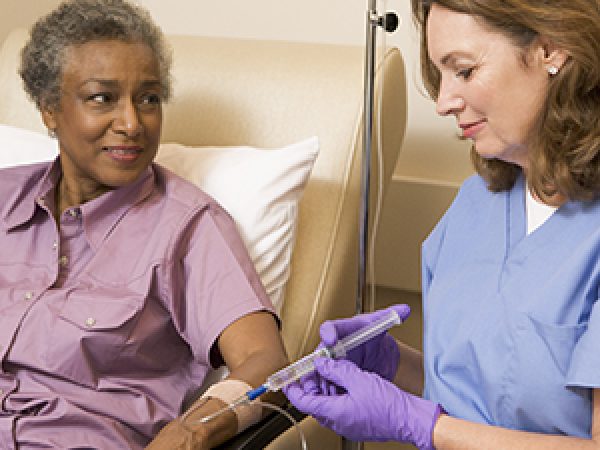AACR Conference on the Microbiome, Viruses, and Cancer: Regulating Microbes to Reduce Chemotherapy Toxicity
“There’s a clear connection between cancer and the gut microbiome,” began Matthew Redinbo, PhD, at the opening keynote address during the recent AACR special conference The Microbiome, Viruses, and Cancer, held in Orlando.
Redinbo, a professor of chemistry, biochemistry, and microbiology at the University of North Carolina at Chapel Hill, noted that there is an “intimate chemical relationship” linking specific microbiota with cancer progression, and that certain bacteria can also modulate patients’ responses to cancer treatment, representing an untapped area of drug discovery.
He described his research demonstrating that specific enzymes within the human gut microbiome play a role in causing toxic side effects from certain anticancer treatments, and that it is possible to decrease such toxicities by targeting these enzymes. Just as we can inhibit human proteins that drive cancer, such as kinases or growth factor receptors, Redinbo argues that we can target bacterial proteins present in the gut microbiome that affect drug efficacy or toxicity.
Modulating microbiota to decrease chemotherapy-related toxicity
Even though immunotherapeutics have revolutionized the field of oncology, most cancers are treated with traditional treatment modalities, such as radiation or chemotherapy, Redinbo said. Because of this, he is focused on finding ways to modulate the microbiome to reduce treatment toxicity from more frequently used anticancer therapies – specifically chemotherapy.

Redinbo first set his sights on the chemotherapeutic agent irinotecan (Onivyde or Camptosar), a drug frequently used to treat colorectal and pancreatic cancer. Following administration, irinotecan, a prodrug, is broken down to its biologically active metabolite known as SN-38, which potently inhibits topoisomerase I and efficiently kills rapidly dividing cells. SN-38 reaches tumors via the vasculature, attacks malignant cells, and then is tagged for elimination, Redinbo explained. “Like many drugs, [SN-38] is inactivated in the liver by the addition of a glucuronide sugar, and that marks it for excretion into the gastrointestinal (GI) tract,” Redinbo said. A major limitation of irinotecan, however, is that in some patients, the drug has acute GI toxicity.
SN-38 reaches the GI tract as an inactive drug, but sugar-scavenging enzymes in the gut can cleave off its glucuronide sugar and reactivate this antineoplastic agent, thus preventing the epithelial cells from replicating and renewing themselves, he noted. The result: severe toxicity, which can be dose-limiting.
As a protein biochemist, Redinbo was interested in these sugar-scavenging enzymes. He hypothesized that inhibiting these enzymes to prevent the reactivation of SN-38 could allow for prolonged treatment with irinotecan to enhance its tumor-killing potential, while increasing quality of life for the patient.
One such enzyme that can cleave off the glucuronide sugar attached to SN-38 is known as β-glucuronidase (GUS). This lysosomal enzyme helps to break down complex carbohydrates by removing sugar groups. While the human GUS is essential, the same is not true in bacterial species, Redinbo explained. He likened bacterial GUS to kids at Halloween – “they’ll eat any sugar that comes by.” As such, bacterial GUS enzymes can be inhibited without killing the bacteria, which can therefore maintain the gut microbial composition.
Redinbo and colleagues set out to develop inhibitors against bacterial GUS enzymes that catalyze the reactivation of SN-38. Starting with a GUS found in Escherichia coli, the researchers identified a potent inhibitor through high-throughput screening which, when administered to mice, was found to have a protective effect against irinotecan-induced gut toxicity. Importantly, this inhibitor was selective for the bacterial GUS by more than 1,000-fold over the human GUS. A later study found that such E. coli GUS inhibitors did not affect the serum pharmacokinetics of irinotecan or its metabolites, suggesting that inhibiting the reactivation of SN-38 in the gut does not affect its antitumor efficacy.
Microbial GUS enzymes represent a brand new class of drug targets, Redinbo said.
Understanding the GUS inside us
Initially, Redinbo assumed that all bacterial GUS enzymes would be structurally and functionally similar to each other. If that were true, an inhibitor against an E. coli GUS would be efficacious against all other bacterial GUS enzymes. However, he found that this wasn’t the case.
To understand the diversity of bacterial GUS enzymes present in the gut microbiome, Redinbo interrogated the Human Microbiome Project (HMP) GI database. Out of the 4.8 million proteins in this database, 279 unique human gut microbial GUS proteins were identified. They were categorized into six classes based on the geometry of the active site of the enzyme. The E. coli GUS, for example, is characterized by its loop adjacent to the active site and is classified as a Loop 1 GUS. These different classes of enzymes “actually do very different reactions,” noted Redinbo.
Next, Redinbo studied which specific types of GUS should be targeted to decrease the toxicity of glucuronidated drugs.
Using a dataset from the HMP assembled from 139 individuals, Redinbo and colleagues could analyze the overall quantity and types of GUS present in each healthy individual’s stool. The participants had, on average, 21.7 GUS enzymes, ranging from as few as four to as many as 38. The composition of each individual “GUSome” was highly variable, however. Roughly one-third of the healthy donors did not have any Loop 1 GUS enzymes. “Not everyone gets GI toxicity [from] irinotecan,” Redinbo noted. “Is this the reason why that toxicity varies in humans?” he posed.
To answer this question, Redinbo analyzed GUS enzymes identified from human fecal samples using an activity-based protein profiling platform. Using a biotin-labeled, glucuronic acid mimic, Redinbo could isolate GUS from the fecal supernatant and identify and quantify these enzymes using proteomics. The fecal supernatant was also assayed for its ability to reactivate SN-38.
Redinbo found that fecal samples with the highest levels of Loop 1 GUS had the highest rates of SN-38 reactivation, and treatment with a Loop 1 GUS inhibitor decreased the levels of SN-38 activation. Inhibiting Loop 1 GUS enzymes may help to decrease irinotecan-associated toxicity in human patients, Redinbo noted.
Beyond irinotecan: developing GUS inhibitors that target differential glucuronidation
Of course, irinotecan is not the only chemotherapeutic agent that can cause acute GI toxicity. In fact, of the 24 anticancer drugs that are eliminated via glucuronidation, 21 cause gut toxicity, representing a common mechanism, Redinbo said.
When irinotecan is tagged for elimination, the sugar group is added to the end of SN-38, representing a terminal glucuronidation. Redinbo’s team was interested in looking at drugs that are not tagged at their terminus, but at a different location on the drug molecule. They studied regorafenib (Stivarga), a VEGFR inhibitor, which is tagged with a central glucuronide before it’s sent to the GI tract.
Using a panel of 31 different GUS enzymes, Redinbo found that only four could process glucuronidated regorafenib. Perhaps unsurprisingly, none of these four proteins fall in the Loop 1 class of GUS enzymes. They belong to a category without a loop adjacent to the active site, termed No Loop GUS enzymes. “We now have a new family of targets,” Redinbo said.
After another round of high-throughput screening, an inhibitor of glucuronidated regorafenib was identified: the selective estrogen receptor modulator raloxifene (Evista), which is used to treat osteoporosis. Using raloxifene as a template, Redinbo has helped to develop more potent inhibitors of glucuronidated regorafenib, representing another class of GUS inhibitors.
Gut check
“The gut microbiome contains druggable targets,” Redinbo emphasized at the end of his talk, representing a new diagnostic and therapeutic paradigm. The observed variabilities between patients in both disease incidence and drug response has not been explained solely by genetics, he pointed out. “And I would submit that a huge variable that matters is the gut microbiota composition.”



